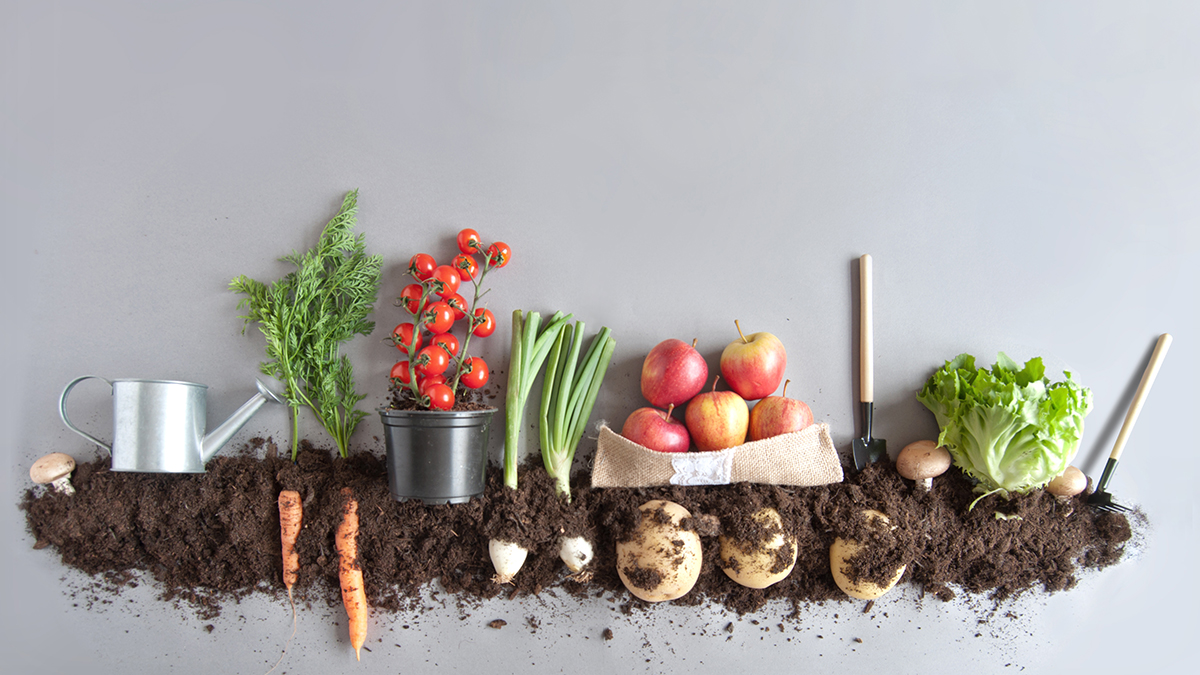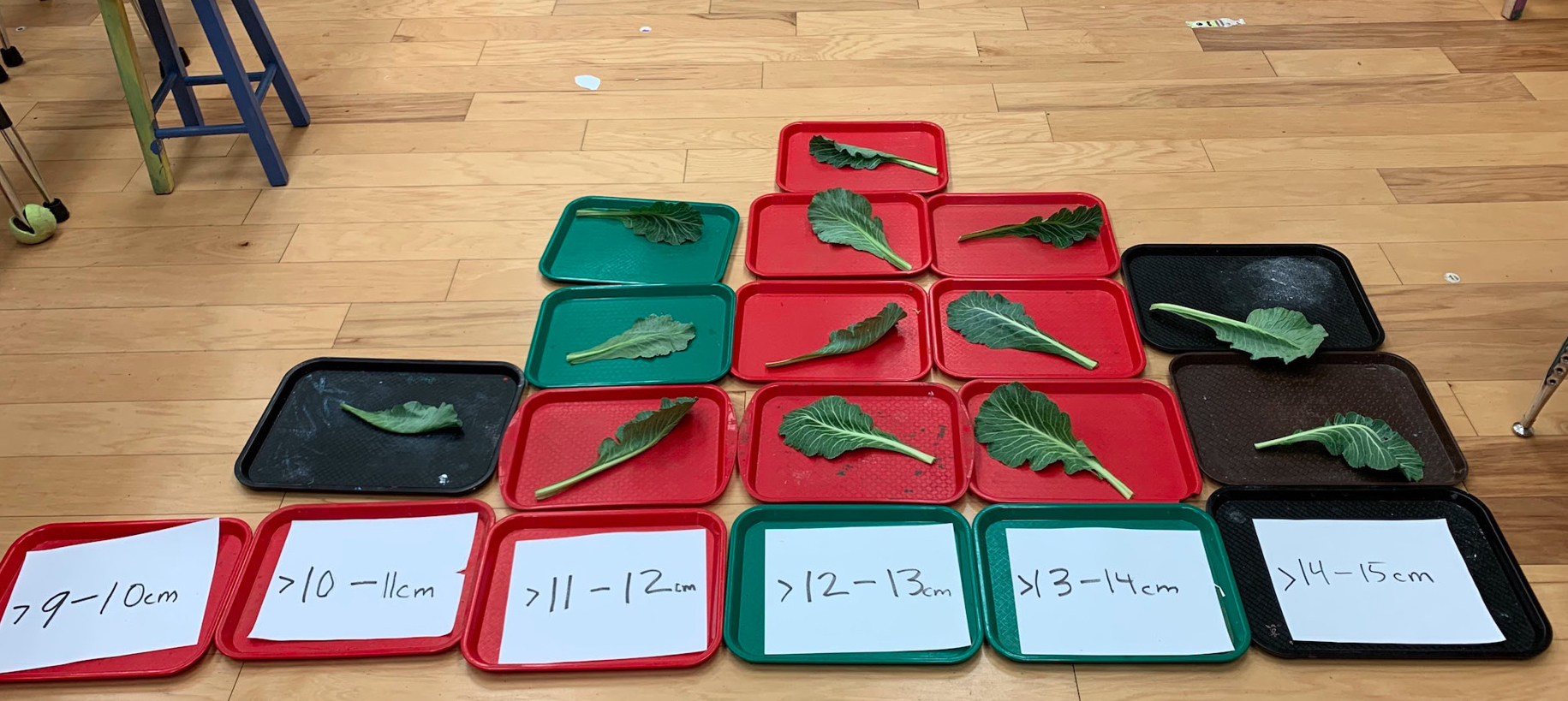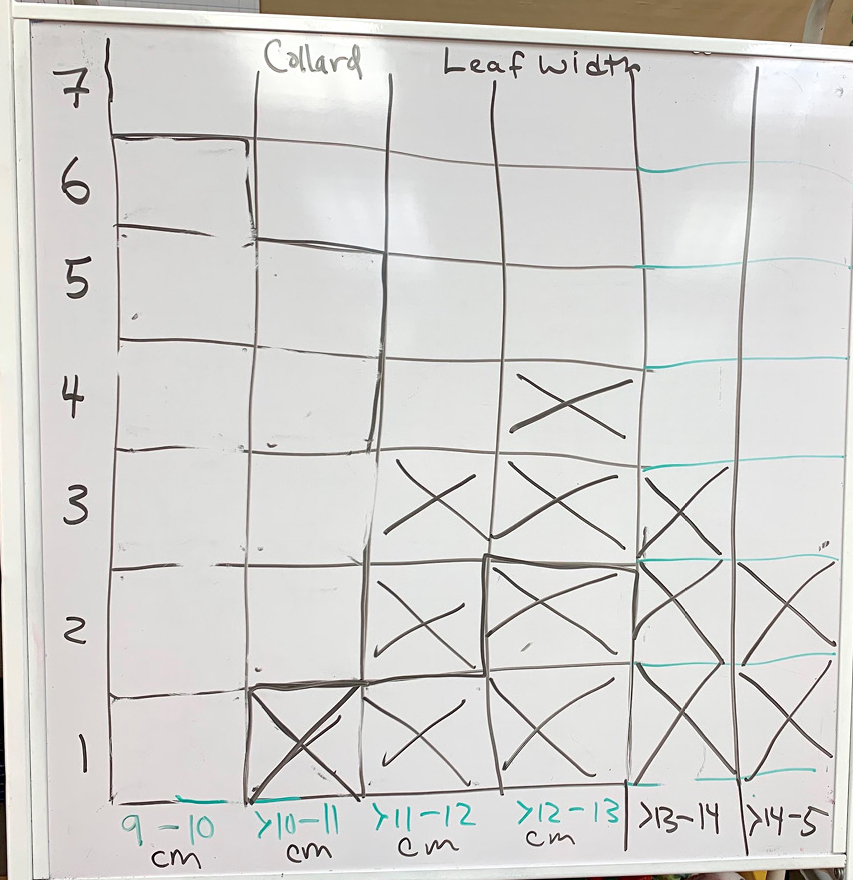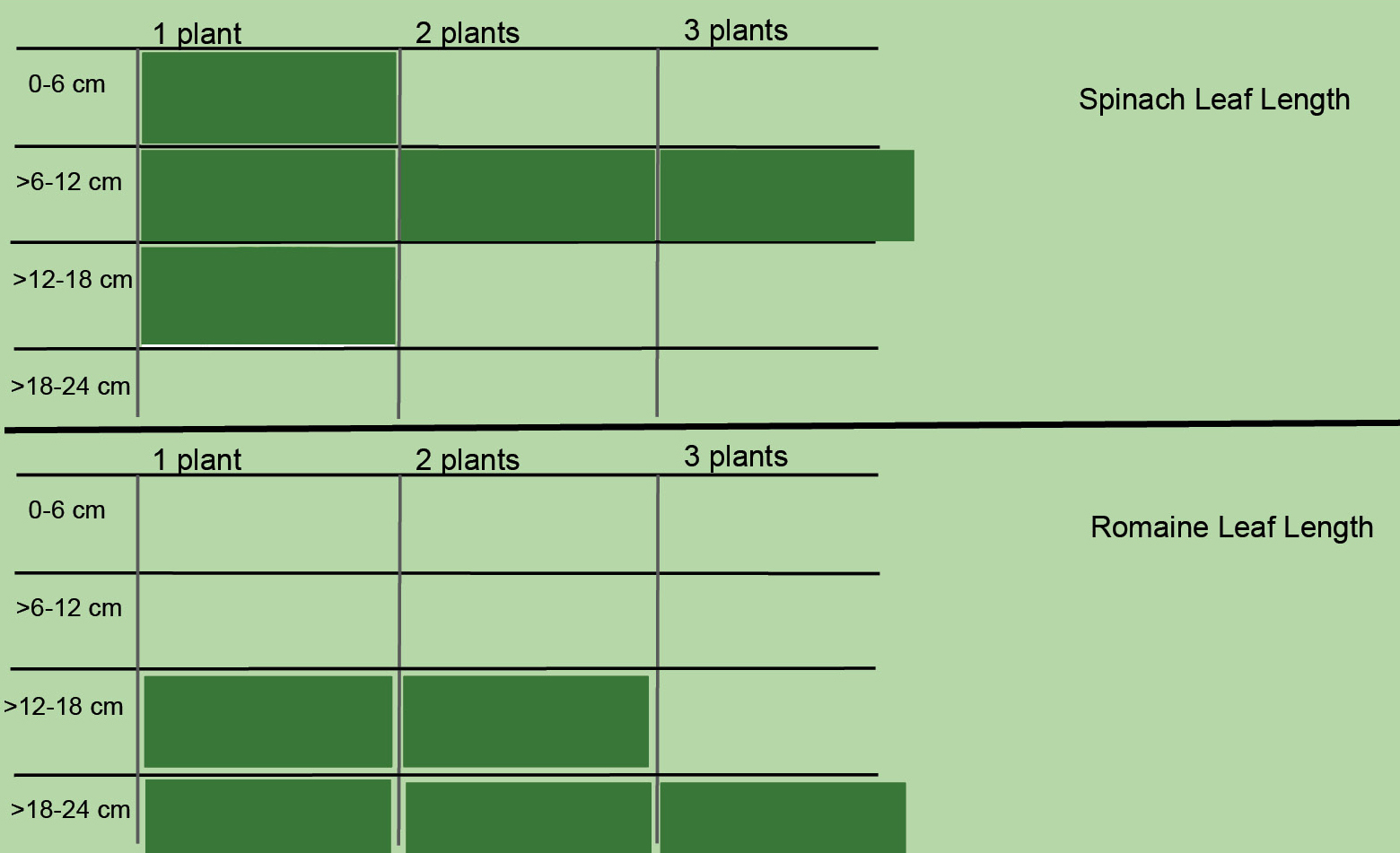feature
Garden Variety
Flexible lessons for exploring ideas about biological variation using indoor and outdoor gardens
Science and Children—March/April 2023 (Volume 60, Issue 4)
By Sky Feller, Stacey Halpern, and Nora Underwood

Working with children in the garden leads to whoops of delight at the sight of a wriggling worm, a germinating seed, or a swelling tomato. Garden time also yields opportunities to encourage deep concentration while watching an unfurling leaf, following the sticky trail of a snail, or stroking the fuzzy leaf of a cucumber. Gardens, as access points to the natural world, can provide inspiring sensory experiences, reduce feelings of stress and anxiety, build a sense of community, and create teachable moments (Chawla, Keena, Pevec, and Stanley 2014; Hyun and Marshall 2003; Ohly et al. 2016). Gardens can also have direct positive impacts on academic outcomes in science, math, and language arts (Williams and Dixon 2013). While the benefits of school gardens are clear, many teachers are uncertain about how to integrate gardens into their science curriculum or are deterred from basing lessons on gardens due to concerns about managing the timing, supply, and success of living plants (Diaz, Warner, Webb, and Barry 2019).
These challenges create a need for support for K–12 teachers who want to use school gardens to teach science. With this aim in mind, a working group of scientists, science educators, and gardeners at Florida State University and Pacific University developed a series of elementary school biology lessons based in school gardens (see Online Resources: “Sources of variation garden-based lessons for 3rd grade–5th grade”). As a second-grade science teacher with access to a school garden and participant in the working group, Ms. Sky used these lessons as inspiration for a unit focused on inheritance and variation in traits (1LS3-1; NGSS Lead States 2013).
This article describes lesson plans that we used to connect second-grade students to learning about sources of biological variation. While we worked with a second-grade class, this set of lessons is adaptable for grades 1–3.
Because materials-based challenges might prevent teachers from using garden-based lessons, we explored using a combination of potted plants, in-ground gardens, and purchased produce. In the next issue of Science and Children, we will describe related lessons that develop student ideas on the inheritance of traits.
Safety First
Note that safety in the garden requires some planning. Teachers will need to confirm that there are no known allergies to plants and common garden insects, and modify plans to accommodate any allergies, have a first aid kit in the garden, and provide garden gloves as hand protection.
Lesson 1: Recognizing Variation at Different Scales
We began our studies by observing the anchoring phenomenon of the variety of plant forms in the garden, with the investigative question “Are these different kinds of plants, and how do we know?” Ms. Sky purchased potted plants from a plant nursery—bok choy, spinach, fennel, and cilantro—to be planted in the garden beds. Plants were unlabeled and in separate pots so that students could observe each plant individually. Ms. Sky asked the children to quietly observe the plants. Students then shared any similarities (e.g., all were green and had leaves, stems, and roots) and differences (e.g., varying leaf shapes, plant heights, and growth forms) they observed. When students suggested there were a few different “kinds” of plants, Ms. Sky asked how they knew whether plants were of the same or different type. Student descriptions at this point were general, e.g., “they look the same” and “they have the same kind of leaves.”
To check the students’ ability to use observations to develop the idea of “same” and “different” plant types and to help them articulate their observations, they participated in a group sorting activity in the garden. The first student selected a plant and set it out to represent a type of plant. Each student in turn then selected one of the plants and either added it to a group or started a new group. Students readily placed plants in groups that corresponded to different vegetable types and agreed on their placement. Two students hesitated during the sorting. Ms. Sky said she had noticed how carefully they were observing and asked what caused them to take a second look. Both said that the differences in height and the presence of buds caused them to examine their plants more carefully. Once they saw that the leaves and stems matched those in an existing group, they decided it belonged to that group. This activity engages students physically in observations, allowing them to move, and can help students who struggle to be still in the classroom.
Once all the plants were sorted, students reflected on the result. They said that plants of each kind were more similar to other plants of the same kind than they were to plants of a different kind. They were now better able to describe the differences they observed between kinds of plants, listing three or four characteristics that were shared by each given group. Ms. Sky asked them whether the plants within each group were identical. Students were quick to recognize differences within each group, noting differences in height, leaf size, and health of leaves (some were wilted or yellowed). They suggested these differences could be the result of differences in age or access to sunlight or water. Ms. Sky reflected back to the students that they had recognized an important pattern—that there can be recognizable groups and that within groups there can also be variation.
Lesson 2: Observing and Characterizing Variation
The main objective of the second lesson was to engage the children in making more structured observations to identify and name measurable traits that could distinguish groups of plants. They also used observation to learn plant parts and associated terminology. Ms. Sky began this lesson with a review of the parts of a plant by working with the students to label a diagram of a plant. To help the students become more conscious of the similarities and differences they were observing among plant types, students were asked to make drawings of two types of plants from our previous discussion in their journals. They each selected two plants to observe and used “ABCDE” drawing, which develops students as observers (see Online Resources: “Introduction to Scientific Sketching”). The acronym ABCDE stands for accurate, big, colorful, detailed, and explained. The method encourages careful observation, prompts students to view and record at different scales, and asks students to document their observations both through drawings and written notes, labels, and questions. The students were familiar with this approach because Ms. Sky begins teaching it in first grade. She began by reminding students of the meaning of the acronym, demonstrated the layout of the page on a large white board, and then modeled the approach by voicing her thought process as she drew for a few minutes (e.g., “I want to make this drawing big, so I will put a dot at the top of my page to show where to start, and a dot near the base of the page where I will end up,” “Now that I look again, I see that there are five leaves on this stem instead of four, so I will add that leaf now.” The students made observations at tables with potted plants; this could also be done in the garden with in-ground plants.
Students divided their journal page in half and drew one type of plant on each side. Ms. Sky directed them to observe differences and similarities between their plants and label those differences on their drawings (Figure 1). Students spent 20 minutes quietly focused on their drawings, documenting variation in leaf shape, stem color, leaf texture, and the size or thickness of plant parts. Ms. Sky circulated among students reinforcing their new observations and encouraging them to name and label plant parts. Students were given rulers and invited to record measurements of plant parts to see if there were measurable differences in some traits among the different plant types. Khyra noted “some stems are thicker, and some are thinner.” James said, “these plants are short, and the other ones are tall.”

Student drawings.
As a formative assessment of students’ ability to recognize plant parts and the types of variation observed, Ms. Sky asked students to design their own plant. Their drawing needed to include all the basic flowering plant parts—roots, stems, leaves, flowers, fruits, and seeds.
Lesson 3: Characterizing Quantitative Differences
This lesson focused on collecting and representing measurable evidence of quantitative differences between plant groups. Students began with real object graphing, using the objects of study (leaves) as placeholders in their histogram, and then progressed to picture graphing and finally the more abstract written histogram or bar chart. Ms. Sky used collard greens and curly endive purchased at the grocery store; both have large sturdy leaves that stand up to student handling. The students discussed different traits they could measure and chose leaf width as a character they thought clearly distinguished the two types of plants. They used a grid of cafeteria trays to set up a real object histogram (Figure 2). Ms. Sky had premeasured the leaves ahead of time to determine the range of values and to set the width of each interval on the x-axis. Students measured collard leaves with rulers (Figure 3), found the appropriate interval, and placed them on a tray until all the samples had been measured. Students noted the range of leaf widths and the number of leaves in each category. Then they transferred the histogram onto the board (Figure 4) and repeated the process with the endive leaves.

Histogram of leaves.

Measuring leaf width.

Collard histogram.
At the end of class, students compared the two histograms. Students shared observations, counting the number of leaves in each interval, and observing that most endive leaves were narrower than collard leaves. The leaf types had different ranges and could be seen to cluster around different means. However, there was also overlap between leaf width in endive and collards. Leaf width alone could not be used to separate these groups, and within the groups there is some variety. Through the process of measuring the deeply incised leaves of the endive, students realized that the leaves were not as narrow as they had appeared, and that leaf shape was a more distinctive trait for these two plant types than leaf width. Students also suggested stem color and leaf margin “waviness” as traits that might have separated the groups more effectively.
Lesson 4: Using Quantitative and Qualitative Measurements to Distinguish Groups
Following their hands-on experience with measuring and representing leaf width variation for two plant types, the students did a similar exercise in an online lesson over Zoom using photographs of spinach and romaine lettuce leaves. First, Ms. Sky introduced the concept of qualitative traits and contrasted them with quantitative traits. Students identified qualitative traits that varied between spinach and romaine lettuce, e.g., leaf margin and stem color. In a whole-group activity, students used the photographs to produce a bar chart based on leaf margin. Students observed the bar charts and recognized that this trait clearly separated spinach and romaine lettuce (Figure 5). Next, they looked at the quantitative trait of leaf length in these two sets of plant photos. Using Google Slides, Ms. Sky produced a drag-and-drop slide where students could drag the photos of the leaves first to the ruler to measure, and then sort them into the correct interval of the histogram. The class sorted the leaves by leaf length to produce a histogram (Figure 6). There was overlap in leaf length and students recognized that some plant traits were more useful for separating these kinds of plants than others. Some suggested that other quantitative traits, such as stem length, might have more clearly distinguished the two plant types. As a summative assessment following this group activity, the students could be presented with new sets of leaves and asked to make the claim about the number of kinds of plants they had and support it with evidence. We have shared a sample assessment and rubric online (see Supplemental Resources).

Comparing spinach and lettuce leaves.

Leaf length histogram.
Reflections
As a result of these lessons, students recognized that individuals of the same kind of plant are similar but not identical. They engaged in a combination of illustration, writing, and discussion to characterize the variation they observed within and between plant types. Students collected data on plant characteristics and used graphs to visualize patterns in variation within and among plant types. This set of lessons allowed them to explore the disciplinary core ideas of LS3.A: Inheritance of Traits, and LS3.B: Variation of Traits, the crosscutting concept of patterns, and the science practices of constructing explanations and designing solutions, while connecting to math and writing standards. From here, they moved to connecting plant life cycles, traits and inheritance using classroom work with individual mini-gardens and the school garden. This set of lessons could easily be modified to work with students ranging from first grade through third grade. For instance, to move students towards performance expectation 3-LS1-2, students could have collected, or been given to analyze, leaf trait data sets from garden beds receiving different environmental treatments.
The in-ground garden was a setting for the first two lessons, but Ms. Sky used potted plants because they gave greater flexibility: They could be moved around, making sorting possible and observation easier. Pots allowed for adequate spacing, an important safety measure during the COVID-19 pandemic. Giving students independent pots can also be useful for managing students who benefit from more personal space to focus. Pots could be moved into the classroom during inclement weather and planted after making measurements. Using purchased leaves for the graphing lessons also provided flexibility. Ms. Sky could ensure adequate supplies of plant material without a large supply of any plant type in the garden. Not relying solely on an in-ground garden simplified engaging in plant-based studies at different scales and with varying amounts of prep-work and maintenance. Although an in-ground garden was not critical to these lessons there was value to tying these lessons to the garden. Basing these lessons in the garden: (1) allowed students to generalize their observations to other plants in the garden, (2) supported later lessons connecting life cycle and variation, and (3) connected the process of growing food for their class with their science activities. We suggest planning to use a combination of resources might empower teachers to feel more confident about embarking on a similar set of lessons by providing some safeguards against the various challenges to working with kids in the garden.
Acknowledgments
We are grateful to the other participants in the “Garden Science” seminar at FSU, which was the inspiration for these lessons: Todd Bevis, Dr. Meredith Cenzer, Dr. Anna Grinath, Henry Gwyn, Dr. Andrew Merwin, Reo Morris, Becky Pengelley, Brendan Scherer, Lindsey Stawowy, and Burgen Schwartz. We thank Cornerstone Learning Community Director Jason Flom for allowing us to test these lessons with students. This work was supported by NSF DEB-1456237 to Nora Underwood and Brian Inouye, and NSF DEB-14559911 to Stacey Halpern.
Supplemental Resources
Download assessment and rubric at https://bit.ly/41nR23p.
Online Resources
California Academy of Sciences, Introduction to Scientific Sketching: www.calacademy.org/educators/lesson-plans/introduction-to-scientific-sketching
Sources of variation garden-based lessons for 3rd grade – 5th grade 5_10_17: osf.io/umwxf/?view_only=8c72c18e1c614641837ac886834cfa73
Sky Feller (sfeller@cornerstonelc.com) is a science and gardening teacher at Cornerstone Learning Community in Tallahassee, Florida. Stacey Halpern is a professor of biology at Pacific University in Forest Grove, Oregon. Nora Underwood is a professor of biological science at Florida State University in Tallahassee.
Biology Life Science NGSS Elementary Grade 1 Grade 2 Grade 3


